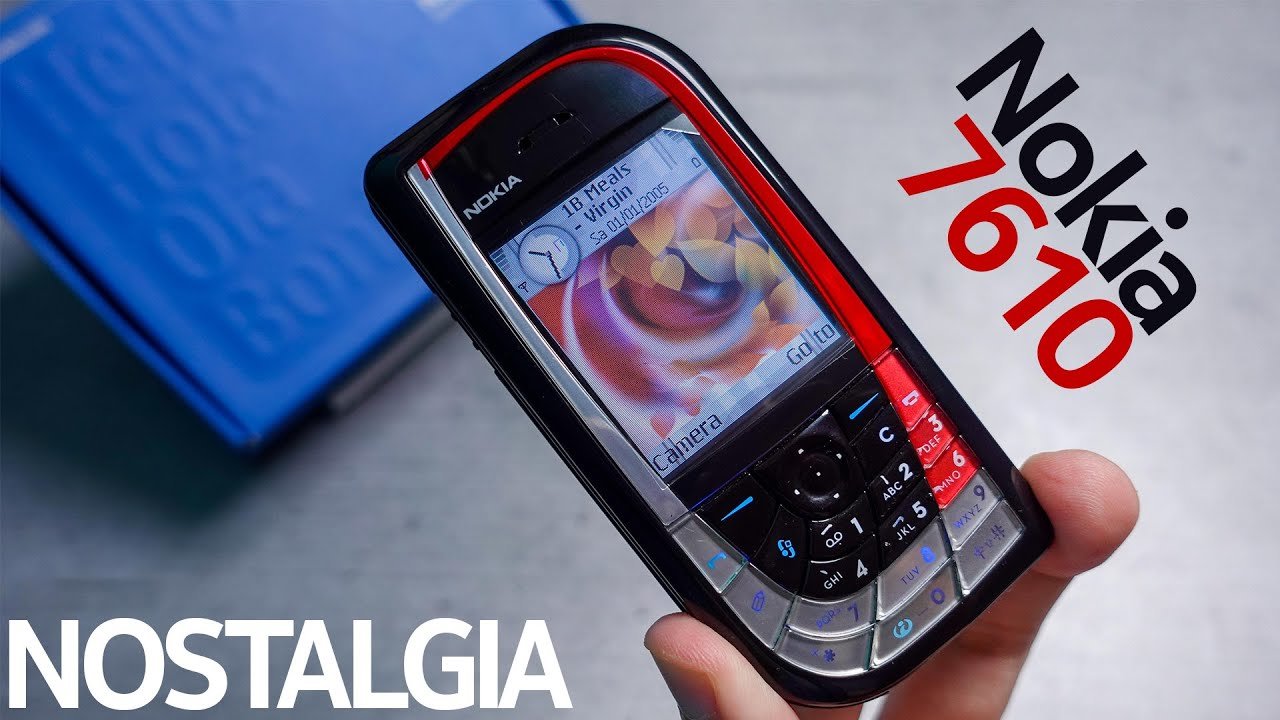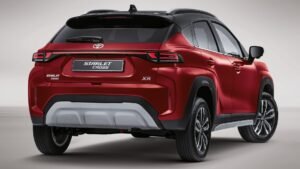The Nokia 7610, launched in 2004, wasn’t just a phone—it was a bold statement. With its unique leaf-shaped design and vibrant features, it broke the mold of the era’s boxy handsets. A pioneer in mobile photography and personalization, it captured the hearts of students, professionals, and tech enthusiasts.
Let’s revisit why this retro gem remains a collector’s favorite and a milestone in smartphone history.
Revolutionary Design
Asymmetrical and Bold
The Nokia 7610 stood out with its asymmetrical, leaf-inspired design, a daring departure from the rectangular phones of the early 2000s. Its sleek curves and compact build made it a fashion accessory as much as a functional device, appealing to those who valued individuality.
Colorful and Expressive
Available in vibrant color options, the 7610 was a canvas for self-expression. Its premium build felt sturdy yet stylish, setting a trend for phones as lifestyle companions rather than just communication tools.
Pioneering Camera Technology
1-Megapixel Innovation
The 7610’s 1-megapixel rear camera was a game-changer in 2004, making photography accessible without a standalone camera. It captured decent stills and short videos, letting users document life on the go—a novelty that laid the groundwork for today’s camera-centric smartphones.
Everyday Creativity
While modest by 2025 standards, the camera empowered users to snap spontaneous moments, from candid portraits to quick clips, sparking the mobile photography revolution that continues today.
Early Smartphone Features
Symbian Series 60 Platform
Running on the Symbian Series 60 platform, the 7610 offered a glimpse of the smartphone future. It supported apps, games, themes, and utilities, allowing users to customize their experience. This flexibility was rare for stylish phones at the time.
Personalization Power
From productivity tools to media apps, the 7610 let users tailor their device, making it feel like a personal companion. It bridged the gap between basic phones and modern smartphones.
Display That Popped
Vibrant 2.1-Inch TFT
The 2.1-inch TFT display with 65,000 colors was a standout in 2004. Bright menus, colorful wallpapers, and clear photo previews made the 7610 visually engaging, enhancing the user experience for its era.
Compact Yet Functional
Despite its small size, the screen delivered a crisp, colorful interface that felt advanced, perfect for browsing menus or viewing early mobile content.
| Key Specs | Details |
|---|---|
| Display | 2.1-inch TFT, 65,000 colors |
| Camera | 1MP rear, video recording |
| OS | Symbian Series 60 |
| Storage | MMC card, up to 128MB |
| Battery | 900mAh, Li-Ion |
| Connectivity | GPRS, Bluetooth, USB |
Practical Storage and Connectivity
Expandable Storage
With MMC card support up to 128MB, the 7610 offered ample space for photos, music, and files in its time. Expandable storage was a forward-thinking feature, letting users carry more without constant file management.
Connected Lifestyle
GPRS enabled mobile internet, Bluetooth allowed wireless transfers, and USB simplified PC syncing. These features fostered a connected experience, from sharing photos to browsing basic web pages, ahead of its time.
Reliable Battery Life
The 900mAh battery provided solid talk and standby time, balancing the phone’s compact design with practical endurance. It kept up with calls, texting, and light app use, making it dependable for daily needs in the early 2000s.
Why the 7610 Mattered
The Nokia 7610 wasn’t just about specs—it was a cultural icon. Its bold design and innovative features made it a favorite among young users and early tech adopters. By blending style, photography, and customization, it redefined what phones could be, paving the way for modern smartphones.
A Collector’s Treasure
Nostalgic Appeal
Today, the Nokia 7610 is a sought-after collectible. Units with original MMC cards, chargers, and packaging fetch higher value, especially in rare colors or pristine condition. Working batteries and intact displays are key for collectors restoring or displaying the device.
Enduring Legacy
The 7610’s influence lives on in its role as a trailblazer for mobile imaging and personalization. It’s a reminder of Nokia’s innovative past, cherished by enthusiasts and collectors worldwide.
Final Thoughts
The Nokia 7610 remains a landmark in mobile history, blending daring design with groundbreaking features. Its 1MP camera, Symbian OS, and vibrant display were ahead of their time, shaping the smartphones we use today. For collectors or nostalgics, it’s a piece of tech history worth celebrating. Check vintage marketplaces for availability, but verify condition before purchasing.
Frequently Asked Questions (FAQs)
When was the Nokia 7610 launched?
The Nokia 7610 was launched in 2004, making waves with its unique design and camera.
What was the camera resolution of the Nokia 7610?
It featured a 1-megapixel rear camera, a significant innovation for mobile photography in 2004.
What operating system did the Nokia 7610 use?
It ran on the Symbian Series 60 platform, offering app support and customization.
Did the Nokia 7610 have expandable storage?
Yes, it supported MMC cards up to 128MB, allowing users to store photos, music, and files.
Why is the Nokia 7610 popular among collectors?
Its iconic leaf-shaped design, historical significance, and rarity in good condition make it a sought-after collectible.
How does the Nokia 7610 compare to modern smartphones?
While basic by 2025 standards, its camera, OS, and design were pioneering, laying the foundation for today’s feature-rich smartphones.



